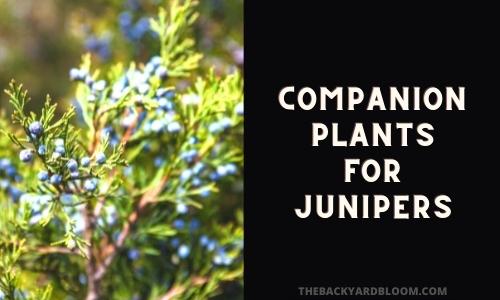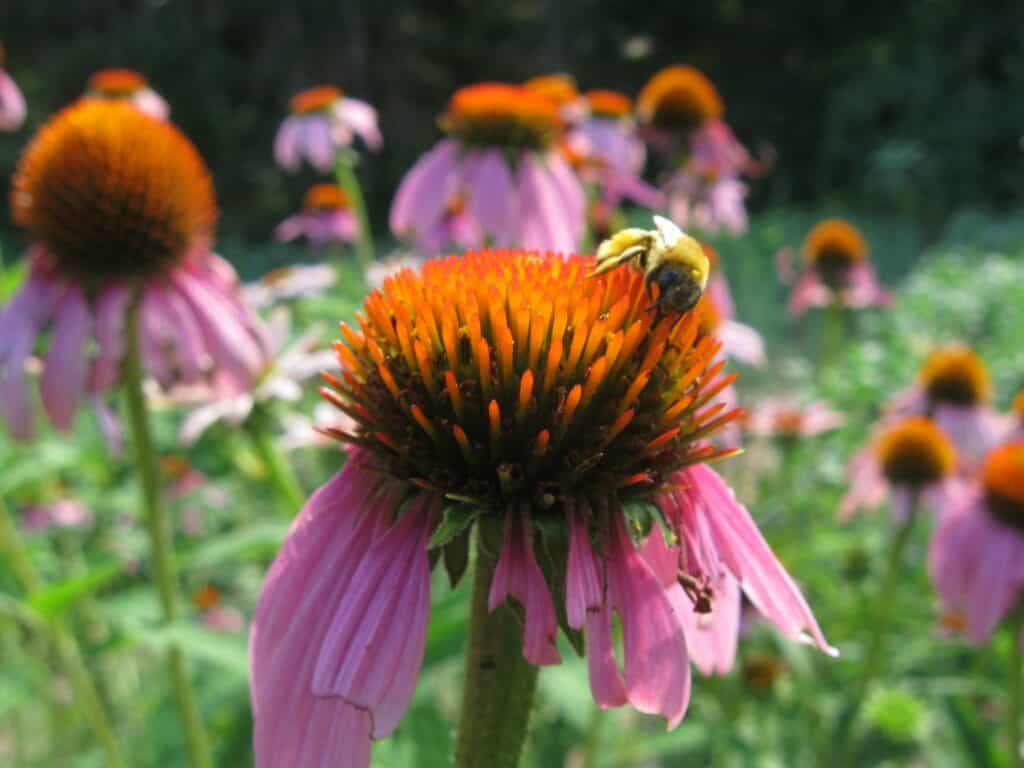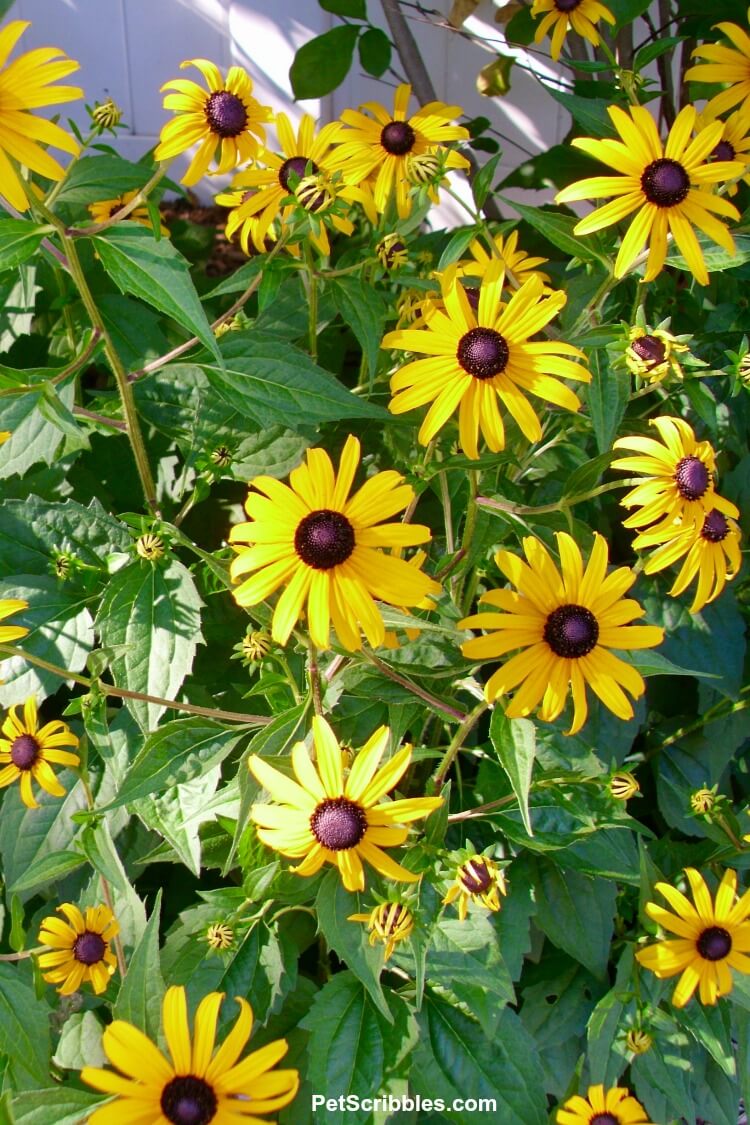Best Juniper Companion Plants For Every Garden
Best Juniper Companion Plants for Every Garden
Junipers are evergreen shrubs or trees that come in a variety of shapes and sizes. They are hardy and drought-tolerant, making them a popular choice for gardens in many different climates. But what are the best juniper companion plants?
The best juniper companion plants will depend on the type of juniper you have, the size of your garden, and the desired effect you are trying to achieve. However, there are some general guidelines that can help you choose the right plants.
1. Consider the size of the juniper. If you have a tall juniper, you will need to choose companion plants that will not be overshadowed. Some good options include yuccas, ornamental grasses, and lavender. For smaller junipers, you can choose a wider variety of plants, such as daylilies, hostas, and sedums.
2. Think about the color of the juniper. If you have a blue juniper, you can choose companion plants that have blue flowers, berries, or leaves. This will create a cohesive and visually appealing look in your garden. Some good options include hydrangeas, salvia, and cornflowers. If you have a green juniper, you can choose companion plants that have a variety of colors and textures. This will add interest and depth to your garden. Some good options include roses, barberry, and heather.
3. Consider the sun exposure of the area where you will plant the juniper. Most junipers prefer full sun, but there are some varieties that can tolerate partial shade. If you are planting your juniper in a shady spot, you will need to choose companion plants that also prefer shade. Some good options include ferns, hostas, and astilbe.
4. Think about the soil type in your garden. Junipers prefer well-drained soil, but they can tolerate a variety of soil types. If you have poor soil, you can amend it with compost or other organic matter. This will help your juniper grow and thrive.
5. Consider the maintenance requirements of the juniper and the companion plants. Some junipers require more pruning than others. You will also need to consider how often you need to water and fertilize your plants. Make sure to choose companion plants that have similar maintenance requirements.
By following these guidelines, you can choose the best juniper companion plants for your garden. With a little planning, you can create a beautiful and harmonious landscape that will bring you joy for years to come.
Junipers are beautiful evergreen shrubs that can add a touch of elegance to any garden. But did you know that there are certain plants that make great companion plants for junipers?
The right companion plants can help to accentuate the beauty of your junipers, while also providing them with some much-needed support. For example, if you have a blue star juniper, you might want to consider planting it with a golden dwarf conifer like Chamaecyparis obtusa 'Nana Lutea'. The contrasting colors of these two plants will create a striking visual effect.
Or, if you're looking for a companion plant that will help to improve the drainage around your juniper, you might want to consider planting it with a drought-tolerant perennial like lavender. Lavender is also a great insect repellent, which can help to keep your juniper healthy and pest-free.
No matter what type of juniper you have, there is a companion plant out there that is perfect for it. To learn more about which plants make the best companions for junipers, visit this website: https://www.gardeningknowhow.com/ornamental/shrubs/juniper/juniper-companion-plants.htm.
FAQ of juniper companion plants
What are good companion plants for juniper?
The best companion plants for juniper will depend on the specific type of juniper you are planting. However, some general tips include choosing plants that have similar growing conditions, such as sun exposure, soil type, and water needs. You may also want to consider plants that have complementary colors or textures. Some good companion plants for juniper include:
- Other conifers, such as spruce, pine, and fir
- Blue-flowered plants, such as hydrangea, salvia, and lily of the Nile
- Silver-leaved plants, such as artemisia, dusty miller, and yucca
- Groundcovers, such as sedum, thyme, and lavender
- Perennials, such as daylilies, iris, and roses
What are some tips for planting juniper companion plants?
When planting juniper companion plants, it is important to consider the size and mature height of both plants. You don't want one plant to outgrow the other and crowd it out. It is also important to plant companion plants in the same type of soil as the juniper. If the soil is too sandy or too clayey, the companion plants may not thrive.
How do I care for juniper companion plants?
The care requirements for juniper companion plants will vary depending on the specific type of plant. However, most companion plants for juniper are relatively low-maintenance. They will need regular watering, especially during the first year after planting. They may also need to be fertilized once or twice a year.
What are some common problems with juniper companion plants?
Some common problems with juniper companion plants include:
- Pests and diseases: Some companion plants, such as roses, are susceptible to pests and diseases. It is important to inspect these plants regularly and treat any problems as soon as possible.
- Overwatering: Juniper companion plants are susceptible to overwatering. It is important to water them deeply but infrequently.
- Poor drainage: Juniper companion plants do not tolerate poor drainage. If the soil is too wet, the roots may rot.
How can I prevent problems with juniper companion plants?
There are a few things you can do to prevent problems with juniper companion plants:
- Plant companion plants in the right location. Make sure they have the right amount of sun exposure, soil type, and water needs.
- Water companion plants deeply but infrequently.
- Add compost or other organic matter to the soil to improve drainage.
- Inspect companion plants regularly for pests and diseases.
- Treat any problems as soon as possible.
Image of juniper companion plants
10 different images of juniper companion plants that are free to use:
1. Lavender Lavender is a classic companion plant for juniper. The two plants complement each other well in terms of their appearance and growing requirements. Lavender is a drought-tolerant, sun-loving plant, just like juniper. It also has a strong fragrance that helps to deter pests.
Lavender is a classic companion plant for juniper. The two plants complement each other well in terms of their appearance and growing requirements. Lavender is a drought-tolerant, sun-loving plant, just like juniper. It also has a strong fragrance that helps to deter pests.
2. Sedum
Sedum is another good choice for a juniper companion plant. It is a low-maintenance, drought-tolerant plant that comes in a variety of colors. Sedum can help to add color and texture to a juniper planting.
3. Yarrow Yarrow is a hardy, drought-tolerant plant that can tolerate poor soil conditions. It is also a deer-resistant plant, which can be helpful if you live in an area with deer. Yarrow blooms in late summer and fall, adding color to the juniper planting.
Yarrow is a hardy, drought-tolerant plant that can tolerate poor soil conditions. It is also a deer-resistant plant, which can be helpful if you live in an area with deer. Yarrow blooms in late summer and fall, adding color to the juniper planting.
4. Iris
Irises are beautiful, colorful flowers that can add a touch of elegance to any garden. They are also relatively easy to care for and can tolerate a variety of soil conditions. Irises prefer full sun, but they can tolerate some shade.
5. Daylily Daylilies are another type of colorful flower that can be planted with junipers. They are also relatively easy to care for and can tolerate a variety of soil conditions. Daylilies prefer full sun, but they can tolerate some shade.
Daylilies are another type of colorful flower that can be planted with junipers. They are also relatively easy to care for and can tolerate a variety of soil conditions. Daylilies prefer full sun, but they can tolerate some shade.
6. Coneflower Coneflowers are tall, showy flowers that add a touch of drama to any garden. They are also relatively easy to care for and can tolerate a variety of soil conditions. Coneflowers prefer full sun, but they can tolerate some shade.
Coneflowers are tall, showy flowers that add a touch of drama to any garden. They are also relatively easy to care for and can tolerate a variety of soil conditions. Coneflowers prefer full sun, but they can tolerate some shade.
7. Echinacea Echinacea is a popular medicinal herb that also makes a beautiful addition to the garden. It is a tall, spiky flower that blooms in the summer. Echinacea prefers full sun and well-drained soil.
Echinacea is a popular medicinal herb that also makes a beautiful addition to the garden. It is a tall, spiky flower that blooms in the summer. Echinacea prefers full sun and well-drained soil.
8. Aster Asters are a type of daisy that blooms in the fall. They come in a variety of colors, including purple, pink, and white. Asters prefer full sun and well-drained soil.
Asters are a type of daisy that blooms in the fall. They come in a variety of colors, including purple, pink, and white. Asters prefer full sun and well-drained soil.
9. Goldenrod Goldenrod is a tall, yellow flower that blooms in the late summer and fall. It is a great choice for attracting pollinators to the garden. Goldenrod prefers full sun and well-drained soil.
Goldenrod is a tall, yellow flower that blooms in the late summer and fall. It is a great choice for attracting pollinators to the garden. Goldenrod prefers full sun and well-drained soil.
10. Black-eyed Susan Black-eyed Susans are cheerful, daisy-like flowers that bloom in the summer. They come in a variety of colors, including yellow, orange, and red. Black-eyed Susans prefer full sun and well-drained soil.
Black-eyed Susans are cheerful, daisy-like flowers that bloom in the summer. They come in a variety of colors, including yellow, orange, and red. Black-eyed Susans prefer full sun and well-drained soil.


Post a Comment for " Best Juniper Companion Plants For Every Garden"